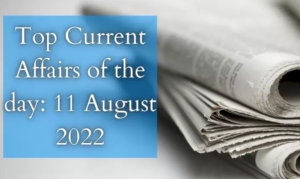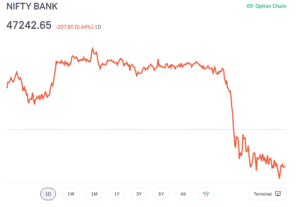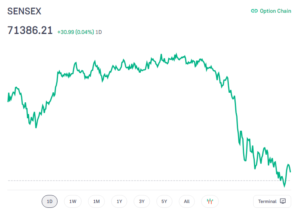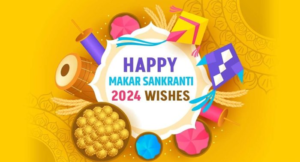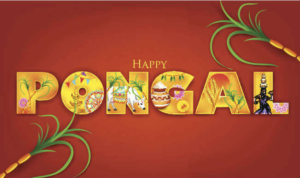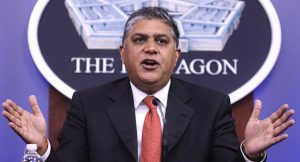
World Press Freedom Index 2022: India ranked 150th
Reporters Without Borders (RSF) has released the 20th World Press Freedom Index 2022, which assesses the state of journalism in 180 countries and territories. The Index highlights the disastrous effects of news and information chaos – the effects of a globalised and unregulated online information space that encourages fake news and propaganda.
Key points of the Index:
- India’s ranking in the Index has fallen down to 150th position from last year’s 142nd rank.
- The ranking of India’s neighbours, except that of Nepal, has also slid down, with the index placing. Nepal has climbed up by 30 points in the global ranking at 76th position.
- Pakistan at 157th position, Sri Lanka 146th, Bangladesh 162nd and Maynmar at 176th position.
- Norway (1st) Denmark (2nd), Sweden (3rd) Estonia (4th) and Finland (5th) grabbed the top positions, while North Korea remained at the bottom of the list of the 180 countries and territories.
- Russia was placed at 155th position, down from 150th last year, while China climbed up by two positions with the Reporters Without Borders placing it at 175th position. Last year, China was placed at 177th position.
- The invasion of Ukraine (106th) by Russia (155th) at the end of February reflects this process, as the physical conflict was preceded by a propaganda war.
List of Bharat Ratna Award Winners of All These Years
Bharat Ratna Award
The highest civilian award in India is the Bharat Ratna award which was instituted in the year 1954. Bharat Ratna award is awarded to the people for their exceptional public service and performance of the highest order in any field of human activity like literature science and art. Any person in any occupation sex or position is eligible for this award. In a year maximum of 3 people are awarded the Bharat Ratna award. Bharat Ratna award is presented by the president of India. The first Bharat Ratna award was awarded to politician C.Rajagopalachari, philosopher Sarvepalli Radhakrishnan, and scientist CV Raman in the year 1954. This award is also awarded posthumously, till now 16 people are awarded Bharat Ratna posthumously.
About Bharat Ratna Award
In a year only three Bharat Ratna awards are awarded. According to article 18 1 of the constitution, the award Bharat Ratna cannot be used as a prefix or suffix to the recipient’s name. The recipient of the award is facilitated with a sanad or certificate signed by the president and a medal. The youngest Bharat Ratna recipe in India was Sachin Tendulkar who received this award in the year 2014 when he was 40 years old. The middle is in the form of a people’s life which is 5.8 cm long, 4.7 cm wide, and 3.1 mm thick. It is a bronze medal and in the middle of the medal, the image of the sun is embossed which is 1.6 CM in diameter. On the other side of the medal state emblem and the Moto of the country are written in Devnagri script.
List of Bharat Ratna award winners
Till now 48 persons got the Bharat Ratna award and 16 were awarded posthumously. A list of all the people who were facilitated with the Bharat Ratna award is listed below with their contributions to society.
| Year | Recipients | About |
| Bharat Ratna 1954 | C. Rajagopalachari | Activist, statesman, and lawyer |
| Sarvapalli Radhakrishnan | India’s first Vice-President and second President | |
| C. V. Raman | Physicists, mathematicians, and scientists | |
| Bharat Ratna 1955 | Bhagwan Das | Activist, philosopher, and educationist |
| M. Visvesvaraya | Civil engineer, statesman, and Diwan of Mysore | |
| Jawaharlal Nehru | Activist and author served as the Prime Minister of India | |
| Bharat Ratna 1957 | Govind Ballabh Pant | Activist and first Chief Minister of Uttar Pradesh |
| Bharat Ratna 1958 | Dhondo Keshav Karve | Social reformer and educator |
| Bharat Ratna 1961 | Bidhan Chandra Roy | physician, political leader, philanthropist, educationist, and social worker |
| Purushottam Das Tandon | Activist and speaker of the United Provinces Legislative Assembly | |
| Bharat Ratna 1962 | Rajendra Prasad | Activist, lawyer, statesman, and scholar |
| Bharat Ratna 1963 | Zakir Husain | Activist, economist, and education philosopher served as a Vice-Chancellor of Aligarh Muslim University and the Governor of Bihar |
| Pandurang Vaman Kane | Indologist and Sanskrit scholar, known for his five-volume literary work | |
| Bharat Ratna 1966 | Lal Bahadur Shastri | Activist and served as the second Prime Minister of India |
| Bharat Ratna 1971 | Indira Gandhi | First women Prime Minister of India |
| Bharat Ratna 1975 | V. V. Giri | Trade Unionist |
| Bharat Ratna 1976 | K. Kamaraj | Independence activist and statesman, former Chief Minister of Tamil Nadu |
| Bharat Ratna 1980 | Mother Teresa | Catholic nun and the founder of the Missionaries of Charity. |
| 1983 | Vinoba Bhave | activist, social reformer, and a close associate of Mahatma Gandhi |
| Bharat Ratna 1987 | Khan Abdul Ghaffar Khan | First noncitizen, independence activist |
| 1988 | M. G. Ramachandran | Actor turned politician, Chief Minister of Tamil Nadu |
| Bharat Ratna 1990 | B.R. Ambedkar | Social reformer and leader of the Dalits |
| Nelson Mandela | Leader of the Anti-Apartheid Movement in South Africa, President of South Africa | |
| Bharat Ratna 1991 | Rajiv Gandhi | Gandhi was the ninth Prime Minister of India serving from 1984 to 1989. |
| Vallabhbhai Patel | Activist and first Deputy Prime Minister of India | |
| Morarji Desai | Activist, and Prime Minister of India | |
| Bharat Ratna 1992 | Abul Kalam Azad | activist and first Minister of education |
| J. R. D. Tata | Industrialist, philanthropist, and aviation pioneer | |
| Satyajit Ray | Director, film-maker, writer, novelist | |
| Bharat Ratna 1997 | Gulzarilal Nanda | Activist, and interim Prime Minister of India. |
| Aruna Asaf Ali | Activist | |
| A.P.J Abdul Kalam | Aerospace and defense scientist | |
| Bharat Ratna 1998 | M. S. Subbulakshmi | Carnatic classical vocalist |
| Chidambaram Subramaniam | Activist and former Minister of Agriculture of India | |
| Bharat Ratna 1999 | Jayaprakash Narayan | Activist, and social reformer |
| Amartya Sen | Economist | |
| Gopinath Bordoloi | Activist | |
| Ravi Shankar | Musician, sitar player | |
| Bharat Ratna 2001 | Lata Mangeshkar | Singer |
| Bismillah Khan | Hindustani classical shehnai player | |
| Bharat Ratna 2009 | Bhimsen Joshi | Hindustani classical vocalist |
| Bharat Ratna 2014 | C. N. R. Rao | Chemist and professor, author |
| Sachin Tendulkar | Cricketer | |
| Bharat Ratna 2015 | Madan Mohan Malaviya | Scholar and educational reformer |
| Atal Bihari Bajpayee | Elected nine times to the Lok Sabha, twice to the Rajya Sabha, and served as the Prime Minister of India for three terms. | |
| Bharat Ratna 2019 | Pranab Mukherjee | Indian politician, and senior leader in the Indian National Congress |
| Nanaji Deshmukh | A social activist from India, education, health, and rural self-reliance | |
| Bhupen Hazarika | Indian playback singer, lyricist, musician, singer, poet, and film-maker from Assam, |
FAQs related to Bharat Ratna Award
1. Who are the recipients of the Bharat Ratna award 2019?
Ans. The recipe and soft Bharat Ratna awards for the year 2019 are activist Nanaji Deshmukh, who was a social activist, Pranab Mukherjee, was a politician and the President of India from 2012 to 2017 and Bhupen Hazarika who was Indian playback, singer, lyricist, singer, poet, filmmaker, and musician.
2. How many Bharat Ratna awards can be given in a year?
Ans. In a year maximum of three Bharat Ratna awards are given to the people who have exceptional public service performance in the society.
3. Who is the first post-Humous recipient of the Bharat Ratna award?
Ans. The first post-Humous recipient of the Bharat Ratna award was former prime minister Lal Bahadur Shastri, he was a social activist.
International Firefighter’s Day 2022
International Firefighter’s Day is observed every year on May 4th to pay respect to those firefighting experts who have lost their lives in the line of duty. The main aim of this day is to recognise and honour professional firefighters across the world. They keep the community and the environment safe by sacrificing their lives for the riskiest jobs.
History of the Day:
A tragic incident in Australia’s Linton led to the establishment of International Firefighters Day. This historical accident happened on December 02, 1998, which led to the taking of the lives of 5 firefighters. Therefore, a proposal was passed on January 04, 1999, to honour the firefighters who lost their lives on duty.
Significance:
The significance of this day is to prevent fire and improve intensive and thorough training. On this day, people across the world express their gratitude by making donations, charity work, campaigns for the firefighters and medical treatment for the firefighters. The symbol for this day is red and blue. The colours signify red for fire and blue for water, which is mostly used for emergency services.
World Portuguese language day2022: 05th May
The date of 5 May was officially established in 2009 by the Community of Portuguese-speaking Countries (CPLP) – an intergovernmental organization that has been in official partnership with UNESCO since 2000, and which brings together peoples with the Portuguese language as one of the foundations of their specific identity – to celebrate the Portuguese language and Lusophone cultures. In 2019, the 40th session of UNESCO’s General Conference decided to proclaim 5 May of each year as “World Portuguese Language Day”.
The Portuguese language is not only one of the most widespread languages in the world, with more than 265 million speakers spread through all continents, but it is also the most widely spoken language in the southern hemisphere. Portuguese remains, today, a major language of international communication and a language with a strong geographical projection, destined to increase.
IIT Bombay and IMD signed MOU to develop user-friendly weather forecasting app
The Indian Institute of Technology (IIT Bombay) has partnered with the Ministry of Earth Sciences’ India Meteorological Department (IMD) to develop climate solutions for stakeholders at the village, city, and district levels. The partnership will aid the institute in the development of sensors and drone-based smart monitoring systems, climate-smart agriculture technology for water and food security, intelligent and automated early warning systems, climate and health, smart power grid management, wind energy forecasting, and heat wave forecasting.
Key Points:
- IIT Bombay is intending to build a Centre of Excellence (CoE) in Climate Services and Solutions within the Interdisciplinary Program in Climate Studies (IDPCS), given the country’s ambitious goal of reaching net zero by 2070.
- “IDPCS at IIT Bombay was established in 2012 and has finished its 10-year journey with considerable financial backing from the Department of Science and Technology.”
- IIT Bombay’s IDPCS is a fantastic effort that is critical for climate science research. Science is interdisciplinary in nature, involving mathematics, engineering solutions, and social sciences, among other disciplines, all of which are necessary to comprehend climate studies.
- IIT Bombay has also established the world’s first chair professorship in climate change.
- The first-ever chair professorship in climate studies has also been established at IIT Bombay.
- “The Vinaya and Samir Kapoor Chair in Climate Studies was established with a generous donation from IIT Bombay alumni Ms. Vinaya Kapoor (B.Tech., Chemical Engineering, 1992) and Samir Kapoor (B. Tech., Electrical Engineering, 1992), and a memorandum of understanding (MoU) was signed.
- The objective of IIT Bombay is to be a thought leader in Climate Studies and to make a difference via cutting-edge research and industrial partnerships.
National Intelligence Grid (NATGRID) Bengaluru campus inaugurated by Amit Shah
Home Minister, Amit Shah inaugurates the National Intelligence Grid (NATGRID) campus in Bengaluru. According to Home Minister Amit Shah, the Narendra Modi government has had a zero-tolerance attitude toward terrorism since the beginning. Mr Shah remarked during the inauguration of the National Intelligence Grid (NATGRID) premises in Bengaluru that security requirements have increased dramatically in terms of data, scope, and complexity compared to past issues. According to him, legal and security authorities require automated, secure, and quick access to data gathered from credible sources.
Key Points:
- The government has tasked NATGRID with establishing and operating a cutting-edge and innovative information technology infrastructure for obtaining data from data collection agencies.
- The Union Government will soon build a national database to track hawala transactions, terrorist funding, counterfeit cash, narcotics, and bomb threats, illicit arms smuggling, and other terrorist operations.
- The Home Minister stated that intelligence and legal agencies should now be able to fully utilise information due to the removal of impediments to essential data.
- There should be a paradigm shift in the way agencies work thanks to data analytics and information technology.
- C-DAC is implementing NATGRID, according to Shah, in keeping with the Prime Minister’s vision of a self-sufficient India.
Attendees:
- Karnataka Chief Minister: Basavaraj Bommai
- Karnataka Home Minister: Araga Gyanendra
- Union Minister of State for Home: Nishith Pramanik
- Union Home Secretary: Ajay Kumar Bhalla
Coal Miners Day 2022
Coal Miners Day is observed on 4th May every year to honour the coal miners. The day is celebrated to highlight the contributions of coal miners in meeting our energy demands. Below, we share a bit of the history of coal mining, the current energy scenario, and the role of coal miners in India.
History of the day:
The day honours the accomplishments and sacrifices made by coal mine workers so far. While the first-ever coal mine was opened in 1575 by one George Bruce of Carnock, Scotland. In India, the coal mining business began in 1774. It was when the East India Company exploited the Raniganj coalfield which is located in the Asansol and Durgapur It falls along the bank of River Damodar that crosses Jharkhand and West Bengal.
Indian Laws That Protect Miners:
- The Mines Act 1952, Mine Rules 1955, Coal Mine Regulation-1957, among others, lay down the provisions for the health, safety and welfare of workers in coal, oil and metal mines.
- The act lays down the minimum wages for miners, extra wages for overtime, the working hours, employment of women, leaves, compensations and punishments for owners violating the laws. Meetings are held multiple times a year by the Standing Committee on Safety in Coal Mines to highlight violations.
FAO’s flagship released its publication “The State of the World’s Forests”
World’s Forests 2022
The State of the World’s Forests 2022 explores the significance of three forest pathways for achieving green recovery and addressing environmental crises such as climate change and biodiversity loss, against the backdrop of the Glasgow Leaders’ Declaration on Forests and Land Use and 140 countries’ pledge to end forest loss by 2030 and support restoration and sustainable production and consumption.
Key Points:
- Stopping deforestation and sustaining forests, repairing degraded lands and increasing agroforestry, and managing forests responsibly and establishing green value chains are the three interconnected pathways.
- Balanced, concurrent pursuit of these paths can provide countries and their rural populations with long-term economic and social benefits, as well as assist in fulfilling growing global demand for materials and managing environmental issues.
- The State of the World’s Forests 2022 includes evidence on the paths’ feasibility and value, as well as the first steps that may be made to pursue them further.
- There is no time to waste; immediate action is required to keep global warming below 1.5 degrees Celsius, reduce the risk of future pandemics, ensure food security and nutrition for all, eradicate poverty, conserve the planet’s biodiversity, and give young people hope for a better world and a better future.
Important Takeaways For All Competitive Exams:
- Headquarters of FAO: Rome, Lazio
- Director-General of FAO: Qu Dongyu
- Parent organization of FAO: United Nations Economic and Social Council
Khelo India University Games 2021 won by JAIN University
JAIN (Deemed-to-be University) with 20 gold, 7 silver and 5 bronze medals has won the 2nd edition of the Khelo India University Games 2021. Lovely Professional University (LPU) with 17 golds has placed second and Punjab University placed third with 15 gold medals. Siva Sridhar has emerged as the star swimmer by winning 11 gold. The closing ceremony of KIUG was held at Sri Kanteerava Outdoor Stadium, Bengaluru. Veera was the mascot of KIUG 2021.
A total of 20 games were played and participated by 3900 students from 210 Universities in the second edition of the Khelo India University Games. The Games introduced indigenous sporting competitions such as Yogasana and Mallakhamba for the first time in the history of national sports.
World Snooker Championship Title 2022 won by Ronnie O’Sullivan
Ronnie O’Sullivan (England) has won the 2022 World Snooker Championship by defeating Judd Trump (England) against 18-13 in the finals, which were held from April 16 to May 2, 2022 at the Crucible Theatre in Sheffield, England. The tournament was organised by the World Snooker Tour and sponsored by sports betting company Betfred. The Total prize money is 2,395,000 Euros and the Winner gets a share of 500,000 Euros.
O’Sullivan (Aged 46) becomes the oldest world champion in Crucible history, eclipsing Ray Reardon, who won his sixth title aged 45 in 1978. It was Ronnie O’Sullivan’s seventh World Snooker Championship title, previously in 2001, 2004, 2008, 2012, 2013 and 2020, equalling Stephen Hendry’s modern-day record of seven world titles (Hendry won all of his in the 1990s).
Largest Statue in the World- All you Need to Know
The Largest Statue in the World
The largest statue in the world is the statue of unity which is located in the state of Gujarat India. The statue of unity is 182 m high and it affects the Indian statesman and independence activist Vallabhbhai Patel. The prime minister of India Narendra Modi announced this project on 7th October 2013, although the project was first announced in 2010 and the construction of the statue started in the year 2013 in October. The construction was started by an Indian company Larsen and Toubro and the total cost of the construction was 2700 crores.
Key points of the largest statue in the world
- The designer of the statue was the Indian sculpture Ram Sutar and the statue was inaugurated by the prime minister Narendra Modi on 31st October 2018, which was the 143rd anniversary of Vallabhbhai Patel’s birthday.
- To execute this project a society named Sardar Vallabhbhai Patel Rashtriya Ekta trust was formed under the chairmanship of the chief minister of Gujarat.
- For the construction of the statue of unity, the makers needed iron which was collected from the farmers. The farmers donated their used farming instruments and by 2016, 135 matric terms of scrap iron were collected to build the statue of unity, it was about 109 turns and was used to make the foundation of the statue.
- The statue of unity is the world’s tallest statue it is 182 meters. It is 54 m higher than the spring temple of Buddha in China’s Henan province. The statue of unity is constructed on a river Island named Sadhu Bed which is 3.2 km away from the Narmada dam.
- The statue is divided into 5 zones, out of which only three hours are accessible to the general public. The first zone of the statue starts from the base to the level of Patel’s shins, which have three levels. These three levels include an exhibition area mezzanine and roof. The first zone also contains a museum and a memorial garden. The second zone of the statue reaches up to the thighs of Patel’s statue, while the third zone extends up to the viewing gallery which is at a height of 153 m.
- After the grand opening of the statue of unity on the first of November 2018, more than 1 lakh tourists visited the statue in 10 days. The statue of unity attracted more than 2 crore visitors in the first year of its operation with rupees 82 crores ticket revenue.
List of Currency of Different Countries with Capitals 2022
List of Countries Capital and Currencies
There are seven continents and each continent contains more than 100 countries. All these countries have different currencies. For example in India, we use Indian rupees and in Afghanistan, we use the Afghani currency. The below-given list will highlight the countries and the currencies used in them. People who travel from one country to another country have to get their money exchanged in the airports. Currency is used as a medium to exchange goods and services. The value of any currency constantly fluctuates from other currencies. The value of one US dollar is 76.26 Indian rupees. There are different values of different currencies all around the world.
Complete List of Currencies of different Countries
| Country | Capital | Currency |
| Afghanistan | Kabul | Afghani |
| Albania | Tirane | Lek |
| Algeria | Algiers | Dinar |
| Andorra | Andorra la Vella | Euro |
| Angola | Luanda | New Kwanza |
| Antigua and Barbuda | Saint John’s | East Caribbean dollar |
| Argentina | Buenos Aires | Peso |
| Armenia | Yerevan | Dram |
| Australia | Canberra | Australian dollar |
| Austria | Vienna | Euro (formerly schilling) |
| Azerbaijan | Baku | Manat |
| The Bahamas | Nassau | Bahamian dollar |
| Bahrain | Manama | Bahrain dinar |
| Bangladesh | Dhaka | Taka |
| Barbados | Bridgetown | Barbados dollar |
| Belarus | Minsk | Belorussian ruble |
| Belgium | Brussels | Euro (formerly Belgian franc) |
| Belize | Belmopan | Belize dollar |
| Benin | Porto-Novo | CFA Franc |
| Bhutan | Thimphu | Ngultrum |
| Bolivia | La Paz (administrative); Sucre (judicial) | Boliviano |
| Bosnia and Herzegovina | Sarajevo | Convertible Mark |
| Botswana | Gaborone | Pula |
| Brazil | Brasilia | Real |
| Brunei | Bandar Seri Begawan | Brunei dollar |
| Bulgaria | Sofia | Lev |
| Burkina Faso | Ouagadougou | CFA Franc |
| Burundi | Gitega | Burundi franc |
| Cambodia | Phnom Penh | Riel |
| Cameroon | Yaounde | CFA Franc |
| Canada | Ottawa | Canadian dollar |
| Cape Verde | Praia | Cape Verdean escudo |
| Central African Republic | Bangui | CFA Franc |
| Chad | N’Djamena | CFA Franc |
| Chile | Santiago | Chilean Peso |
| China | Beijing | Chinese Yuan |
| Colombia | Bogota | Colombian Peso |
| Comoros | Moroni | Franc |
| Republic of the Congo | Brazzaville | CFA Franc |
| Zimbabwe | Harare | United States dollar |
| Costa Rica | San Jose | Colón |
| Cote d’Ivoire | Yamoussoukro (official); Abidjan (de facto) | CFA Franc |
| Croatia | Zagreb | Croatian |
| Cuba | Havana | Cuban Peso |
| Cyprus | Nicosia | Euro |
| Czech Republic | Prague | Koruna |
| Denmark | Copenhagen | Danish Krone |
| Djibouti | Djibouti | Djiboutian franc |
| Dominica | Roseau | East Caribbean dollar |
| Dominican Republic | Santo Domingo | Dominican Peso |
| East Timor (Timor-Leste) | Dili | U.S. dollar |
| Ecuador | Quito | U.S. dollar |
| Egypt | Cairo | Egyptian pound |
| El Salvador | San Salvador | Colón; U.S. dollar |
| Equatorial Guinea | Malabo | CFA Franc |
| Eritrea | Asmara | Nakfa |
| Estonia | Tallinn | Estonia Kroon; Euro |
| Ethiopia | Addis Ababa | Birr |
| Fiji | Suva | Fiji dollar |
| Finland | Helsinki | Euro (formerly markka) |
| France | Paris | Euro (formerly French franc) |
| Gabon | Libreville | CFA Franc |
| The Gambia | Banjul | Dalasi |
| Georgia | Tbilisi | Lari |
| Germany | Berlin | Euro (formerly Deutsche mark) |
| Ghana | Accra | Cedi |
| Greece | Athens | Euro (formerly drachma) |
| Grenada | Saint George’s | East Caribbean dollar |
| Guatemala | Guatemala City | Quetzal |
| Guinea | Conakry | Guinean franc |
| Guinea-Bissau | Bissau | CFA Franc |
| Guyana | Georgetown | Guyanese dollar |
| Haiti | Port-au-Prince | Gourde |
| Honduras | Tegucigalpa | Lempira |
| Hungary | Budapest | Forint |
| Iceland | Reykjavik | Icelandic króna |
| India | New Delhi | Indian Rupee |
| Indonesia | Jakarta | Rupiah |
| Iran | Tehran | Rial |
| Iraq | Baghdad | Iraqi Dinar |
| Ireland | Dublin | Euro (formerly Irish pound [punt]) |
| Israel | Jerusalem* | Shekel |
| Italy | Rome | Euro (formerly lira) |
| Jamaica | Kingston | Jamaican dollar |
| Japan | Tokyo | Yen |
| Jordan | Amman | Jordanian dinar |
| Kazakhstan | Nur Sultan | Tenge |
| Kenya | Nairobi | Kenya shilling |
| Kiribati | Tarawa Atoll | Kiribati dollar |
| North Korea | Pyongyang | Won |
| South Korea | Seoul | Won |
| Kuwait | Kuwait City | Kuwaiti Dinar |
| Kyrgyzstan | Bishkek | Som |
| Laos | Vientiane | New Kip |
| Latvia | Riga | Lats |
| Lebanon | Beirut | Lebanese pound |
| Lesotho | Maseru | Maluti |
| Liberia | Monrovia | Liberian dollar |
| Libya | Tripoli | Libyan dinar |
| Liechtenstein | Vaduz | Swiss franc |
| Lithuania | Vilnius | Litas |
| Luxembourg | Luxembourg | Euro (formerly Luxembourg franc) |
| Macedonia | Skopje | Denar |
| Madagascar | Antananarivo | Malagasy Ariary |
| Malawi | Lilongwe | Kwacha |
| Malaysia | Kuala Lumpur | Ringgit |
| Maldives | Male | Rufiyaa |
| Mali | Bamako | CFA Franc |
| Malta | Valletta | Euro |
| Marshall Islands | Majuro | U.S. Dollar |
| Mauritania | Nouakchott | Ouguiya |
| Mauritius | Port Louis | Mauritian rupee |
| Mexico | Mexico City | Mexican peso |
| Federated States of Micronesia | Palikir | U.S. Dollar |
| Moldova | Chisinau | Leu |
| Monaco | Monte Carlo | Euro |
| Mongolia | Ulaanbaatar | Togrog |
| Montenegro | Podgorica | Euro |
| Morocco | Rabat | Dirham |
| Mozambique | Maputo | Metical |
| Myanmar (Burma) | Nay Pyi Taw | Kyat |
| Namibia | Windhoek | Namibian dollar |
| Nauru | no official capital; government offices in Yaren District | Australian dollar |
| Nepal | Kathmandu | Nepalese rupee |
| Netherlands | Amsterdam; The Hague (seat of government) | Euro (formerly guilder) |
| New Zealand | Wellington | New Zealand dollar |
| Nicaragua | Managua | Gold cordoba |
| Niger | Niamey | CFA Franc |
| Nigeria | Abuja | Naira |
| Norway | Oslo | Norwegian krone |
| Oman | Muscat | Omani rial |
| Pakistan | Islamabad | Pakistani rupee |
| Palau | Melekeok | U.S. dollar |
| Palestine | Ramallah, East Jerusalem | Palestine Pound |
| Panama | Panama City | Balboa; U.S. dollar |
| Papua New Guinea | Port Moresby | Kina |
| Paraguay | Asuncion | Guaraní |
| Peru | Lima | Nuevo sol (1991) |
| Philippines | Manila | Peso |
| Poland | Warsaw | Zloty |
| Portugal | Lisbon | Euro (formerly escudo) |
| Qatar | Doha | Qatari riyal |
| Romania | Bucharest | Romanian Rupee |
| Russia | Moscow | Ruble |
| Rwanda | Kigali | Rwandan franc |
| Saint Kitts and Nevis | Basseterre | East Caribbean dollar |
| Saint Lucia | Castries | East Caribbean dollar |
| Saint Vincent and the Grenadines | Kingstown | East Caribbean dollar |
| Samoa | Apia | Tala |
| San Marino | San Marino | Euro |
| Sao Tome and Principe | Sao Tome | Dobra |
| Saudi Arabia | Riyadh | Riyal |
| Senegal | Dakar | CFA Franc |
| Serbia | Belgrade | Serbian Dinar |
| Seychelles | Victoria | Seychelles rupee |
| Sierra Leone | Freetown | Leone |
| Singapore | Singapore | Singapore dollar |
| Slovakia | Bratislava | Euro |
| Slovenia | Ljubljana | Slovenian tolar; euro (as of 1/1/07) |
| Solomon Islands | Honiara | Solomon Islands dollar |
| Somalia | Mogadishu | Somali shilling |
| South Africa | Pretoria (administrative); Cape Town (legislative); Bloemfontein (judiciary) | Rand |
| South Sudan | Juba | Sudanese Pound |
| Spain | Madrid | Euro (formerly peseta) |
| Sri Lanka | Colombo; Sri Jayewardenepura Kotte (legislative) | Sri Lankan rupee |
| Sudan | Khartoum | Sudanese Pound |
| Suriname | Paramaribo | Surinamese dollar |
| Swaziland | Mbabane | Lilangeni |
| Sweden | Stockholm | Krona |
| Switzerland | Berne | Swiss franc |
| Syria | Damascus | Syrian pound |
| Taiwan | Taipei | Taiwan dollar |
| Tajikistan | Dushanbe | somoni |
| Tanzania | Dar es Salaam; Dodoma (legislative) | Tanzanian shilling |
| Thailand | Bangkok | Baht |
| Togo | Lome | CFA Franc |
| Tonga | Nuku’alofa | Pa’anga |
| Trinidad and Tobago | Port-of-Spain | Trinidad and Tobago dollar |
| Tunisia | Tunis | Tunisian dinar |
| Turkey | Ankara | Turkish lira (YTL) |
| Turkmenistan | Ashgabat | Manat |
| Tuvalu | Vaiaku village, Funafuti province | Tuvaluan Dollar |
| Uganda | Kampala | Ugandan new shilling |
| Ukraine | Kiev | Hryvnia |
| United Arab Emirates | Abu Dhabi | U.A.E. Dirham |
| United Kingdom | London | Pound sterling |
| United States of America | Washington D.C. | Dollar |
| Uruguay | Montevideo | Uruguay peso |
| Uzbekistan | Tashkent | Uzbekistani sum |
| Vanuatu | Port-Vila | Vatu |
| Vatican City (Holy See) | Vatican City | Euro |
| Venezuela | Caracas | Bolivar |
| Vietnam | Hanoi | Dong |
| Yemen | Sanaa | Rial |
| Zambia | Lusaka | kwacha |
FAQs related to countries and their currency
1. What is the capital of a country?
Ans. The capital of a country acts as the head of the state. It is the prime center of all government-related offices and services. People in the capital of India control all the administration of the country.
2. How many currencies are used in the world?
Ans. There are 180 currencies used in the world according to the United Nations.
3. What is the currency used in India?
Ans. In India, Indian rupees or INR are used as currency.
4. Which country has more than one currency?
Ans. Bhutan used more than one currency, Indian rupees, and Bhutanese ngultrum.
DD National Pet Show ‘Best Friend Forever’ Wins ENBA Award 2021
Doordarshan has won ENBA Award 2021 for the best in-depth Hindi series for its TV series based on pet care ‘Best Friend Forever’ at the 14th edition of the Exchange4media News Broadcasting Awards (ENBA). The show is aired every Sunday at 7 pm and is also available on the YouTube channel of DD National.
About the ‘Best Friend Forever’ show:
- Best Friend Forever is a half-an-hour weekly live phone-in show on DD National, wherein two pet experts guide people on how to take care of their pets, about their food, nutrition, routine health check-ups, vaccination and other pet-related issues.
- The objective of the show is to maintain a two-way communication where viewers can directly call and talk to the experts, and share their worries and experiences. From the first day, phone calls started pouring in from across the country. Apart from other age groups, youngsters and kids engage the most with the show.
- The show also features stories which explain the unique relationship one develops with their pets and how pets not only take the modern-day stress away but are also life-savers.
Cryptocurrencies in India: Finance Minister Nirmala Sitharaman 2022
Cryptocurrency in India
Ever since Finance Minister Nirmala Sitharaman spoke about digital currencies in her Budget 2022-2023 speech earlier this month, the curiosity about the matter has risen by leaps and bounds.
In the year 2018, the finance ministry had issued a statement saying that the government does not consider Cryptocurrencies to be legal tender and all measures will be taken to eliminate the usage of Cryptocurrencies. Soon after the Reserve Bank of India issued a circular stating that all banks and government entities should stop providing any kind of services to all the parties associated with Cryptocurrencies.
In 2020, with the rise and advancement of the usage of Cryptocurrency, this circular was retracted by the Supreme Court of India allowing banks to resume their transactions with parties associated with Cryptocurrencies. NASSCOM tweeted welcoming this decision and soon there was a boost in Cryptocurrency trading in India.
Best cryptocurrency in India:
Bitcoin has a clear potential for growth considering these attributes. Of course, virtual currencies, like traditional currencies, can also be used for money laundering and other criminal activities. However, the chances are akin to the physical world. Bitcoin is the first name that comes to mind when we discuss cryptocurrency. However, there are a few more virtual currencies like Ethereum (ETH), Litecoin (LTC), Cardano (ADA), Polkadot (DOT), Stellar (XLM), Dogecoin (DOGE) etc.
History of Bitcoin:
Created in the year 2009 by an individual or group of individuals using the pseudonym Satoshi Nakamoto. Bitcoin is considered to be the first Cryptocurrency ever developed and currently, there are more than 18.5 million Bitcoin tokens under circulation.
Buying cryptocurrency in India:
To buy cryptocurrency in India, an investor first needs to create an online storage option for the crypto (like Bitcoin), through a third party, along with finding a crypto exchange. In the exchange, the investor will have to create an exchange account via an exchange service.
Cryptocurrency exchanges in India:
Just like foreign investors, Indian peers have also poured billions of dollars into digital coins, thanks to the presence of cryptocurrency exchanges that are aiming to reshape the crypto industry in the country.
Several of these trading platforms or apps, which allow their clients to trade in cryptocurrency with ease, have emerged in the past few years. A few of them have now gained over millions of clients trading on the platform, signalling the popularity of the digital asset in India.
- CoinDCX
- WazirX
- CoinSwitch Kuber
- UnoCoin
- Bitbns
Frequently Asked Questions
Ques: Is ?
Ans: The Reserve Bank of India and GOI does not recognise Cryptocurrecy as a legal tender in India. Although, the government is working on a bill for Cryptocurrecy, but till then it not legal in the country.
Ques: Which cryptocurrency is best in India?
Ans: There is no best cryptocurrency, because it totally depends on the market capitalization that which one will give the best returns. But there are some top performing cryptocurrencies, like Bitcoin, Ethereum, Solana, Cardano, Tether, etc.
Ques: How many cryptocurrency are there in India?
Ans: There are in all 15 homegrown exchange platforms for trading and selling cryptocurrencies. India now has the highest number of crypto owners in the world.
Ques: Is crypto banned in India?
Ans: In March 2020, the Supreme court of India struck down the ban on crypto currencies that was imposed by Government of India in 2018.
Times Higher Education (THE) Impact Rankings 2022: India ranked 4th
The Times Higher Education (THE) has released the 2022 edition of its Impact Rankings. 8 Universities from India are placed in the top 300 universities in the world. The ranking is topped by Western Sydney University (Australia); followed by Arizona State University (The US), Western University (Canada). This year, a record 1,524 institutions from 110 countries participated in the rankings. Australia’s Western Sydney University secured the top position globally in the overall ranking.
Key points:
- India is the joint fourth most-represented nation across the rankings, with 64 universities featuring in total (the same number as Turkey).
- In South Asia, India breaks through into the world’s top 50, with Amrita Vishwa Vidyapeetham claiming 41st place in the overall table. Lovely Professional University makes the top 100 at joint 74th place in the overall table.
- Calcutta University has been ranked first among all the central and state-aided public universities in the country by Times Higher Education (THE) Impact Rankings 2022. Calcutta University grabbed 14th position globally in the ‘Decent Work and Economic Growth’ sub-category.
Rajasthan turns out as the First 10 GW Solar State
According to Mercom’s India Solar Project Tracker, Rajasthan became the first state in India to reach 10 GW of cumulative large-scale solar installations. The state has a total installed power capacity of 32.5 GW, with renewables accounting for 55 percent, thermal energy for 43 percent, and nuclear energy accounting for the remaining 2%. Solar is the most common energy source, accounting for roughly 36 percent of total capacity and 64 percent of renewables.
Key Points:
- The thermal contribution was largest in the first quarter of FY 2021-22.
- Rajasthan has some of the highest sun irradiation levels in the country, as well as other advantages such as land availability and few power outages.
- These favourable conditions have prompted neighbouring states, such as Maharashtra, to establish power-generation plants in Rajasthan.
- Other notable projects include those created by NTPC and the Solar Energy Corporation of India (SECI), as well as those developed as part of the Rajasthan State Solar Policy.
- Rajasthan has about 16 GW of solar projects under development, according to Mercom’s India Solar Project Tracker.
- The total amount of SECI-awarded projects is 11.6 GW, with 6.2 GW being interstate transmission system (ISTS) projects.
- Despite numerous projects being stuck owing to the Great Indian Bustard (GIB) issue, installations grew.
About Rajasthan Solar Energy Policy:
- Rajasthan’s Solar Energy Policy 2019 was issued in 2019, with the goal of achieving a 30 GW solar power target by FY 2024-25.
- Utility or grid-scale solar parks will account for 24 GW, distributed production will account for 4 GW, rooftop solar and solar pumps will each account for 1 GW.
THDC India, a state-owned company, recently signed a Letter of Intent (LoI) to construct a power plant. State-owned THDC India has signed a Letter of Intent (LoI) with Rajasthan Renewable Energy Corporation Limited to build 10 GW of solar power plants in a 74:36 joint venture, involving a $100 billion ($1.33 billion) investment.
Andy Jassy To Join As Next Amazon CEO On 5th July 2022
Jeff Bezos, who established Amazon exactly 27 years ago on July 5, 1994, has stepped down as CEO, and Andy Jassy, a longtime AWS executive, has taken over as the company’s new CEO. Jassy is currently identified as President and CEO of Amazon.com, as well as a member of the Board of Directors, on the Amazon investor relations website.
Key Points:
- Bezos said in May that Jassy would take over as CEO of the e-commerce behemoth on July 5.
- AWS is thought to account for around half of the company’s revenue.
- In the March quarter of this year, AWS, Amazon’s cloud division, posted a $54 billion annualised run rate, up 32% year over year.
About Jeff Bezos Other Ventures:
- Bezos is also the owner of the Washington Post and the founder of the aerospace business Blue Origin, which is working to reduce the cost and increase the safety of spaceflight. He has founded two charitable organisations.
- On July 20, Bezos and his brother will ride to the edge of space aboard Blue Origin’s New Shepard tourism rocket.
- Bezos, who grew an online bookshop into a $1.7 trillion corporate company that reaches into space.
About Andy Jassy:
- From its founding, Jassy developed and directed Amazon Web Services (AWS), serving as its CEO from April 2016 until July 2021.
- Jassy joined Amazon in 1997 and held several leadership positions across the company before developing AWS, including both business-to-business and business-to-consumer.
India ranked 21st in Chainalysis 2021 Cryptocurrency Gains by Country
According to the data released by crypto analytics firm Chainalysis, investors around the world realized total Crypto gains of $162.7 billion in 2021, compared to $32.5 billion in 2020. This is 2nd consecutive data by Chainalysis. Ethereum is the most noteworthy gainer among the crypto assets. The report highlights that Ethereum edged out Bitcoin in total realized gains globally at $76.3 billion to $74.7 billion.
Key Points:
- However, India ranked lowly at 21st with realized gains of around $1.85 billion while it is topped by the United States with an estimated realized Crypto gain of $49.95 billion.
- The US is followed by the United Kingdom at 2nd with estimated realized Crypto gains of $8.16 billion, Germany ($5.82 billion), Japan ($5.51 billion), and China ($5.06 billion).
Harshada Sharad Garud becomes the 1st Indian to win gold medal at IWF Junior World Weightlifting Championship
Harshada Sharad Garud made history by being the first Indian woman to win a gold medal at the IWF Junior World Championships in Heraklion, Greece. She won the 45-kilogram weight category with a total of 153 kilograms lifted, including 70 kilograms in Snatch and 83 kilograms in Clean and Jerk.
Key Points:
- Garud led India to a medal on the first day of the competition, leaving eight rivals behind. Bektas Cansu of Turkey won the silver medal, while Teodora-Luminita Hincu of Moldova won the bronze.
- Anjali Patel, the second Indian in the same weight division, came in sixth with a total effort of 148 kilos, including 67 kilograms in snatch and 81 kilograms in clean and jerk.
- Only two Indians have won a medal in the IWF Junior World Championships before
- Mirabai Chanu was a bronze medalist in 2013 while Achinta Sheuli was a silver medalist the previous year.
About Harshada Sharad Garud:
- Harshada Sharad Garud, the first Indian weightlifter to win a gold medal at the IWF Junior World Championship 2022, also won the under-17 girls’ title at the 2020 Khelo India Youth Games.
- Harshada began weightlifting as a 12-year-old at the urging of her father, Sharad Garud, who was a state-level weightlifter himself.
Nand Mulchandani named as 1st-ever chief tech officer of CIA
Indian-Origin, Nand Mulchandani has been appointed as the first-ever Chief Technology Officer (CTO) of the Central Intelligence Agency (CIA), the first line of defence for the United States. Prior to this, he served as the CTO and acting director of the Joint Artificial Intelligence Centre under the US Department of Defence. He served as the CEO of multiple successful startups like Oblix (acquired by Oracle), Determina, OpenDNS, and ScaleXtreme.
Before joining the CIA, Mulchandani most recently served as the CTO and acting director of the US Department of Defense’s Joint Artificial Intelligence Center.
Who is Nand Mulchandani?
- Mulchandani completed his schooling in Delhi. He studied at the Bluebells School International between 1979 and 1987 and then went to Cornell University for his undergraduate course in Computer Science and Math. He then went on to secure a Master of Science degree in Management from Stanford, and a Master in Public Administration degree from Harvard.
Important takeaways for all competitive exams:
- Central Intelligence Agency Founder: Harry S. Truman;
- Central Intelligence Agency Founded: 26 July 1947;
- Central Intelligence Agency Headquarters: Langley, McLean, Virginia, United States;
- Central Intelligence Agency Director: William J. Burns;
- Central Intelligence Agency Deputy Director: David S. Cohen.

